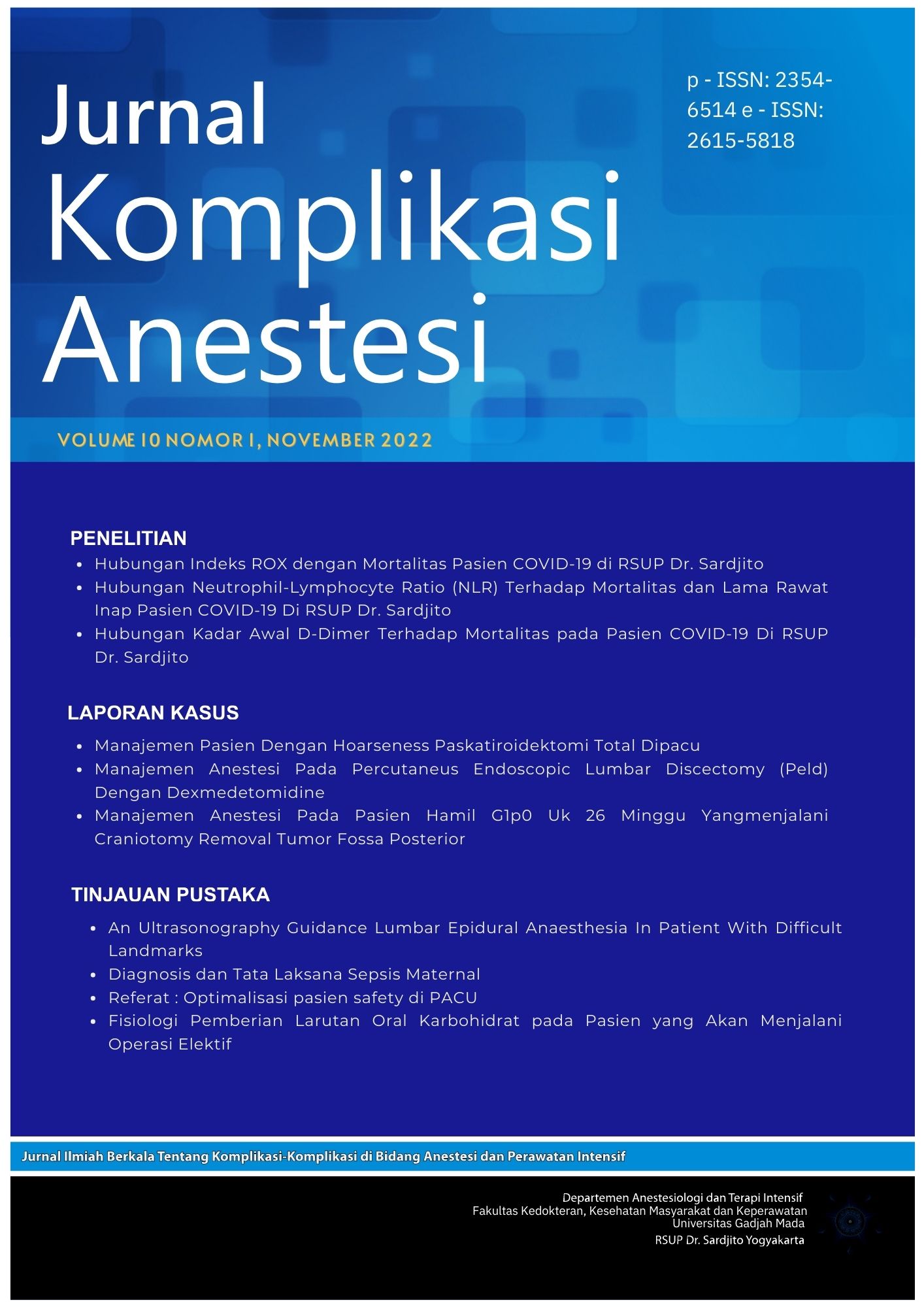Hubungan Neutrophil-Lymphocyte Ratio (NLR) Terhadap Mortalitas dan Lama Rawat Inap Pasien COVID-19 Di RSUP Dr. Sardjito
Abstract
Background: COVID-19 is a viral-caused disease which has become pandemic disease with broad clinical manifestation. Neutrophyl Lymphocyte Ratio (NLR) may represent immune system dysregulation, a warning sign in mild COVID-19 patient and was predicted to have relation to mortality and length of stay. NLR is a simple blood test and applicable in daily clinical practice.
Method: This study is an observational, cohort retrospective by taking secondary data from confirmed COVID-19 patient’s medical record during April 2020 – Maret 2021. NLR cut-off point was concluded using ROC and Youden’s Index. Survival Kaplan Meier analysis was used to determine the relation between NLR, mortality, and length of stay (LOS). This relation was analyzed using univariat and Cox regression multivariat analysis
Method: This study is an observational, cohort retrospective by taking secondary data from confirmed COVID-19 patient’s medical record during April 2020 – Maret 2021. NLR cut-off point was concluded using ROC and Youden’s Index. Survival Kaplan Meier analysis was used to determine the relation between NLR, mortality, and length of stay (LOS). This relation was analyzed using univariat and Cox regression multivariat analysis.
Result: 273 samples was included in the study. With 7,62 cut-off point, it was found that 190 samples had NLR <7,62 and 83 samples had NLR >7,623. Multivariat analysis shown that samples with higher NLR independently and significantly had higher mortality risk (HR 3,345, p<0,001). Samples with NLR > 7,62 significantly had longer LOS (23 vs 19 days, respectively). However, multivariat analysis shown that NLR did not correlate with LOS (p=0,090).
Summary: High NLR >7,62 independently and significantly correlate with higher mortality risk. Univariat analysis shown that higher NLR correlate with LOS in COVID-19 patients, but did not affect LOS.
Copyright (c) 2022 Fatkhur Roofi Khoeri, Djayanti Sari, Yunita Widyastuti

This work is licensed under a Creative Commons Attribution-NonCommercial-ShareAlike 4.0 International License.
The Contributor and the company/institution agree that all copies of the Final Published
Version or any part thereof distributed or posted by them in print or electronic format as permitted herein will include the notice of copyright as stipulated in the Journal and a full citation to the Journal.

















